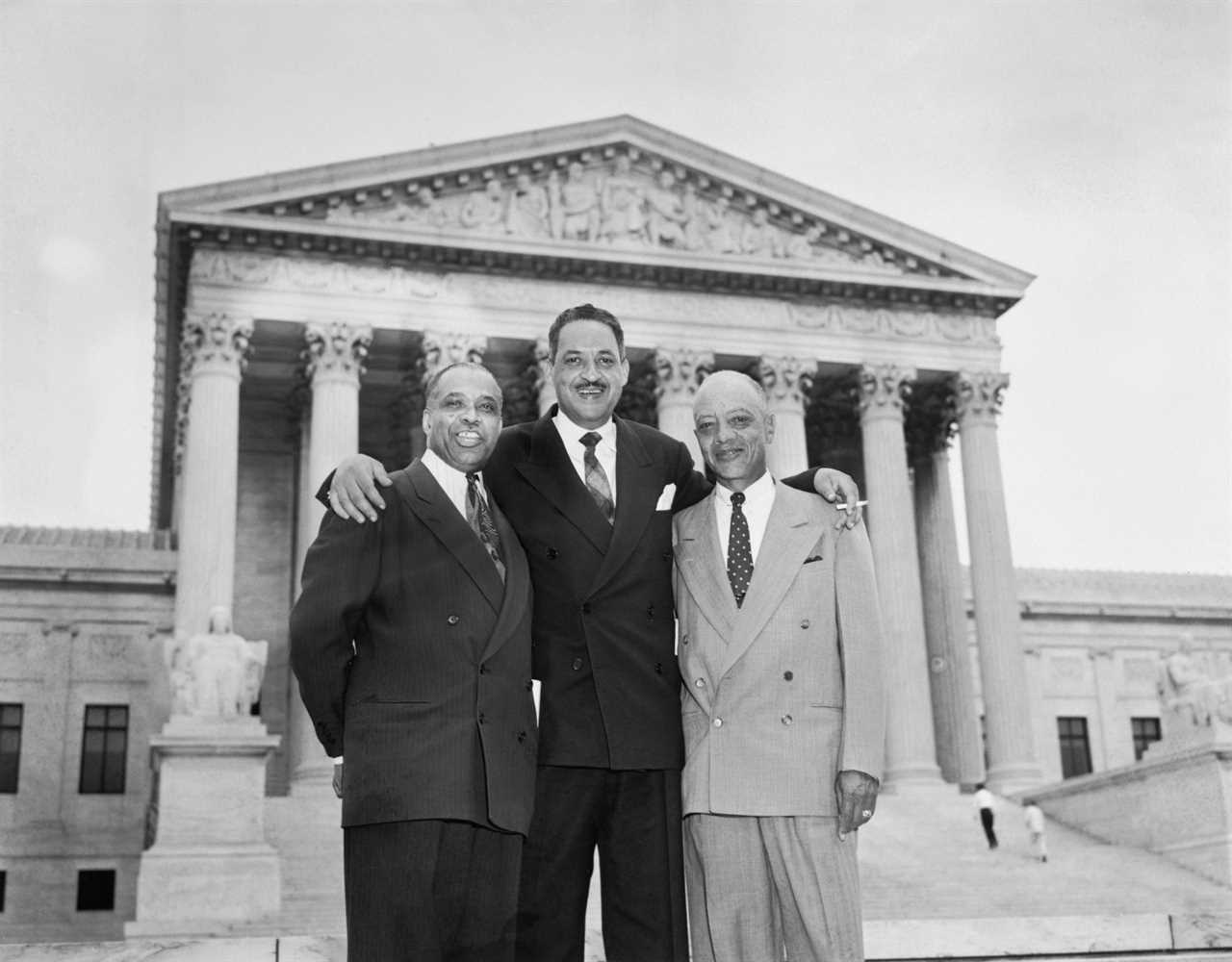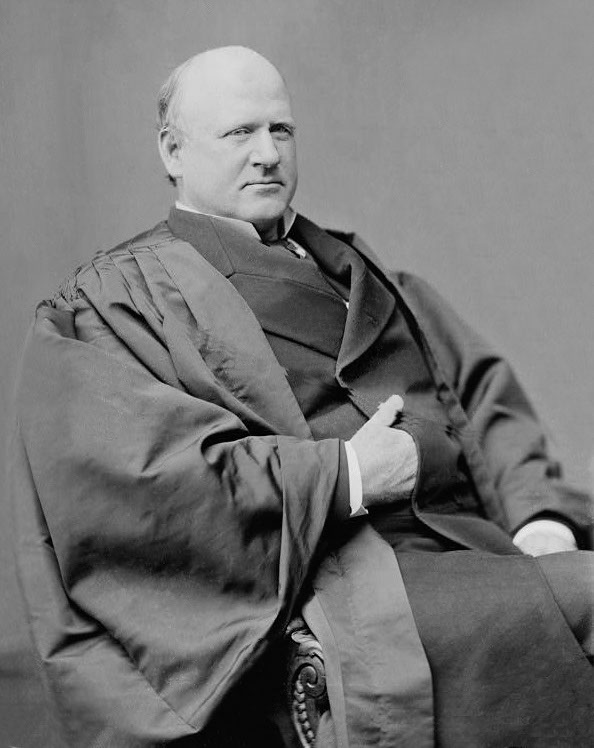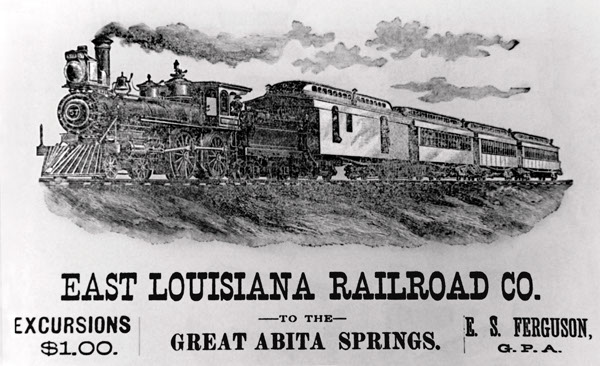
During a period of intense debate over affirmative action in 1987, Thurgood Marshall, the nation’s first Black Supreme Court justice, was called upon to defend one of his judicial heroes, John Marshall Harlan.
It was Harlan whose lone dissent in the 1896 case of Plessy v. Ferguson had inspired the young Marshall to challenge the Supreme Court’s invidious separate-but-equal doctrine. And when Marshall, as head of the NAACP Legal Defense Fund, brought Brown v. Board of Education before the Supreme Court, he quoted Harlan’s famous edict “the Constitution is color blind and neither knows nor tolerates classes among citizens” as the true expression of American law.
By the 1980s, however, Harlan’s words were being used to attack any form of racial preference, and Marshall wasn’t persuaded: “Justice Harlan, as you remember, dissenting in Plessy v. Ferguson, first gave expression to the judicial principle that our Constitution is color blind. … In principle of race neutrality, our situation now, nearly 90 years later, would be far different than it is” if Harlan’s views had prevailed, Marshall told a group of Second Circuit judges. “Affirmative action is an issue today because it was not color blind in the 60 years which intervened between Plessy and Brown.”

Marshall’s comment was a shrewd formulation of the traditional defense of affirmative action: that racial preferences are a necessary corrective to past discrimination, a remedial measure, with modern jobs or slots at prestigious universities serving to rebalance the playing field for victims of legal or institutional bias. Two years after Marshall’s comments, the Supreme Court moved to restrict affirmative action. It reluctantly accepted the notion of remedies for past discrimination, but only if they were very narrowly construed. In City of Richmond v. Croson, the court struck down an ordinance that set aside 30 percent of contracts for minority-owned firms because the city had not sufficiently proven that current-day contractors were victims of discrimination. Marshall dissented.
Now, the Croson holding — a defeat for affirmative action in its time — is itself being challenged as too generous a reading of the Constitution’s equal protection clause. In the case of Students for Fair Admissions v. Harvard, involving admissions policies at Harvard University and the University of North Carolina, the court will have to decide whether, more than three decades later, there is enough of a legacy of past discrimination to justify any racial preferences.
In the eyes of many, the answer is an emphatic yes: History has left a landscape strewn with racial imbalances. But the question remains: Under what terms can a government bound by a Constitution requiring equal protection under the law apportion benefits by reference to race? Where are the lines between remedial justice and some policymaker’s notion of an appropriate division of the spoils?

With the coming of the Harvard case, scholars are once again debating the meaning of Harlan’s words. In the days surrounding the court’s unusually long five-hour hearing in late October, Harlan’s name was bandied about in scores of news stories and opinion pieces, raising the question of what he would think of today’s fights over racial preferences. He happens to be a favored role model of many of the justices, the rare figure who connects left and right, so his views have currency.
It is, of course, impossible to say what Harlan, who died in 1911, would think of current-day disputes. But it’s not too much of a leap to say that his defense of equal protection under the law was deeply rooted and intensely felt, and that he would look skeptically on any case that eroded that protection. He would also warn about the long-term impact of such erosion, since he considered equality to be a foundational principle of the nation. In his view, violations of equal rights not only caused the Civil War but represented a constant, ongoing threat to the future of the nation. Plainly, in his opinion, the best way to enforce equal protection was to reject racial distinctions, to treat “man as man and [take] no account of his surroundings or of his color when his civil rights as guaranteed by the supreme law of the land are involved,” as he wrote in his Plessy dissent.

In Harlan’s time, those insights made him the nation’s foremost defender of civil rights — virtually the only white person in a position of power to decry the stripping away of Black people’s rights. But would those same ideas now make him an opponent of affirmative action? An exploration of the roots of Harlan’s views, the forces that buffeted him and the nation in his lifetime, may not provide a direct answer, but offers a vivid illustration of the costs and perils of inequality under the law. Those who plumbed Harlan’s opinions in October were looking in the right direction, but missed the extent to which Harlan’s life — more than any abstract theory of the Constitution — framed his feelings about legal equality.
Born in 1833 into a leading Kentucky family, and named for the nation’s most influential jurist, Harlan grew up believing that the American legal system was a beacon of light for the entire world. In the United States, the Constitution was sovereign, not kings or emperors. But Harlan’s upbringing was shadowed by the looming sectional conflict over slavery. Like many leading Kentuckians, he and his father, James Harlan, supported Henry Clay in his efforts to forestall the crisis through compromise. Like Clay, the Harlans had qualms about slavery but would willingly accept its continuation as an alternative to war. They also had enslaved people in their household, though one of them — Robert Harlan — was treated more as a family member and reputed in his time to be the son of James Harlan. Robert would go on to earn a fortune in the Gold Rush and become a leading Black politician while retaining his ties to the extended Harlan family.
After the Civil War, in which John Harlan saw relentless combat as a colonel in the Union Army, his views began to evolve. Like Lincoln, who was also a Clay admirer, Harlan came to see the Constitution’s initial failure to exclude slavery as a fatal flaw. Slavery was such an obvious, odious violation of the nation’s founding principles that it weakened the nation’s legal and moral firmament; the weight of that contradiction almost crushed the American experiment in its cradle.

The Supreme Court played a role by making racial inequality the law of the land in the infamous 1857 Dred Scott case. The court’s deeply flawed opinion put the nation on the path to a war that killed more than 600,000 people, mostly of Harlan’s own generation. Then, when the Ku Klux Klan began asserting its power in his home state, he saw first-hand how racism could flourish and endure, absent a strong legal system to crack down on it. Having lived through a military declaration of martial law in Kentucky, he knew that troops were not a long-term solution: Once soldiers left their posts, prosecutors and judges needed to step in to enforce the law.
Later, after the start of his own Supreme Court career, his conviction that legal inequality was a political sin — and, perhaps, a moral one as well — led to a fateful breach with his Supreme Court colleagues. After five mostly quiet years on the nation’s high tribunal, he alone broke with his colleagues in the most consequential case of the era, the Civil Rights Cases of 1883, which struck down a federal civil rights law. In unusually forceful language, he accused his fellow justices of using “subtle” and “artificial” means to defeat the plain meaning of the post-Civil War amendments to the Constitution.
What followed was not just a repression of Black hopes and dreams — represented by Robert Harlan’s dazzling rise to power and subsequent struggles — but a steady worsening of racial animus throughout the land. Continuing its assault on Black rights, the Supreme Court rejected a case calling for the enforcement of voting rights — going so far as to admit that the Constitution was being violated, but claiming no power to alter the situation — while giving constitutional approval to a state law mandating segregation in private colleges.
It didn’t escape Harlan’s attention that, in their zeal to enforce racial distinctions in the law, his fellow justices were putting themselves in contradictory positions. In the Civil Rights Cases of 1883, they rejected the idea that businesses and private institutions were arms of the state because they were legally created by government charters or incorporation papers; as purely private entities they were free to discriminate. But in Berea College v. Kentucky, the justices accepted that Kentucky could force a private college to segregate its students along racial lines expressly because its charter made it, yes, a creature of the state.
When Plessy v. Ferguson came along, Harlan had been dissenting on racial matters for 13 years, and his views had crystallized. The case involved a Louisiana law forcing Black railroad passengers to travel in separate carriages, with the state insisting that it was still offering “equal protection” because the accommodations were roughly same. Harlan was having none of it.

“What can more certainly arouse race hate, what more certainly create and perpetuate a feeling of distrust between the races, than state enactments which, in fact, proceed on the grounds that colored citizens are so inferior and degraded that they cannot be allowed to sit in public coaches occupied by white citizens,” he wrote.
It was his constant theme: Failure to enforce equal protection fans the flames of racial animus.
Harlan’s sense of legal inequality as a cancer that could destroy the American system extended beyond the realm of Black-white relations. Though he joined a unanimous majority in rejecting a challenge to the Chinese Exclusion Act, for which the only legal issue was whether the Senate had the power to abrogate a treaty (and which remains the law today), he dissented sharply when a California prosecutor failed to enforce a civil rights law to protect Chinese workers and when the court denied birthright citizenship to a Native American who had left his tribal reservation.
When the United States asserted itself as an imperial power, taking control of Puerto Rico, Hawaii, Cuba and the Philippines while pointedly denying them equal rights, Harlan saw the seeds of future wars being planted in his own time. While his colleagues contended that Hispanic and Asian populations were so backward that they couldn’t function under a constitutional structure, Harlan insisted that all individuals under the power of the Constitution be granted its protections, lest inequality reign.
“It will then come about that we will have two governments over the people subject to the jurisdiction of the United States — one, existing under a written Constitution … the other, existing outside of the written Constitution, in virtue of an unwritten law, to be declared from time to time by Congress, which is itself only a creature of that instrument,” he wrote.
Harlan sensed the tectonic plates of society shifting again, and feared a re-activation of the forces that led to the Civil War. In his mind, inequality under the law inevitably led to strife. It also altered social and economic structures in ways that were difficult to unravel. The simple solution was enforcement of the equal protection clause of the Constitution. That, in his mind, meant treating people of every race equally.
“God bless our dear country!” he declared in a speech before many of the nation’s leaders, including President Theodore Roosevelt, at a dinner commemorating his 25th year on the Supreme Court. “God bless every effort to sustain and strengthen it in the hearts of the people of every race subject to its jurisdiction and authority!”
It didn’t escape Harlan’s notice that the same paeons to equality that led to the freedom of enslaved peoples could be used to deny them necessary government protections. In the Civil Rights Cases of 1883, Justice Joseph Philo Bradley, writing for a court majority that rejected civil rights protections, suggested that the time had come for Black people to cease to be “the special favorite of the laws” — this, just 18 years after the Civil War and at a time when the Ku Klux Klan murdered Black men by the dozens. Harlan shot back: “It is, I submit, scarcely just to say that the colored race has been a special favorite of the laws.”
Harlan didn’t live to see the end of segregation, or to know that his own words would play a role in bringing it about. But he would not have failed to comprehend that legal measures to offset the effects of segregation operate on a different basis than those that enforced segregation. For a university that had barred Black students to then make special efforts to accept Black students — especially if was also granting preferences for applicants whose parents attended — was simply fair and just, advancing the cause of equality rather than impeding it.
But affirmative action has moved to a different place, as the nation’s pastiche of diversity has grown richer and more complex. Many universities aren’t linking racial preferences to past discrimination in the rigorous, fact-finding manner envisioned by some jurists, focused on how earlier practices altered the fates of today’s applicants. Rather, they are seeking diversity as an end unto itself, viewing anything but proportionate representation of racial groups as per se evidence of discrimination. America’s understanding of historical modes of exclusion and oppression may be stronger, but the connection between those dynamics and today’s beneficiaries of affirmative action may not be. Racial distinctions are varied and complicated; affirmative action, at least in some forms, is arbitrary. Not every beneficiary has suffered equally and not every person who is denied benefits wears a similar badge of privilege. There are also mechanisms such as preferences for students from disadvantaged backgrounds or for those who are the first in their families to go to college that can promote campus diversity without reference to race.
What Harlan could not accept is that racial distinctions come at little cost. Plessy v. Ferguson, with its winking assertion that separate railroad coaches were equal, weakened his appetite for alternatives to the essential mandate of equality. Experience taught him that privileges and detriments under the law are pernicious forces. When combined with race, they not only amplify discord but create it. After the Civil War, he alone among jurists predicted the devastation wrought by segregation, and saw its seeds in the unequal treatment of Hispanic and Asians.

The question for Harlan, then and now, would be whether a measure serves to help individuals realize the promise of equal protection under the law. That form of justice, the comfort of knowing your rights are respected, was his prescription for peace. Would affirmative action meet his test? It’s hard to say, but nothing in today’s racial situation would give him occasion to weaken his judgment or temper his vigilance.
----------------------------------------
By: Peter S. Canellos
Title: Why Court’s Civil Rights Hero Might Have Opposed Affirmative Action
Sourced From: www.politico.com/news/magazine/2022/12/11/john-marshall-harlan-opposed-affirmative-action-00073295
Published Date: Sun, 11 Dec 2022 07:00:00 EST






